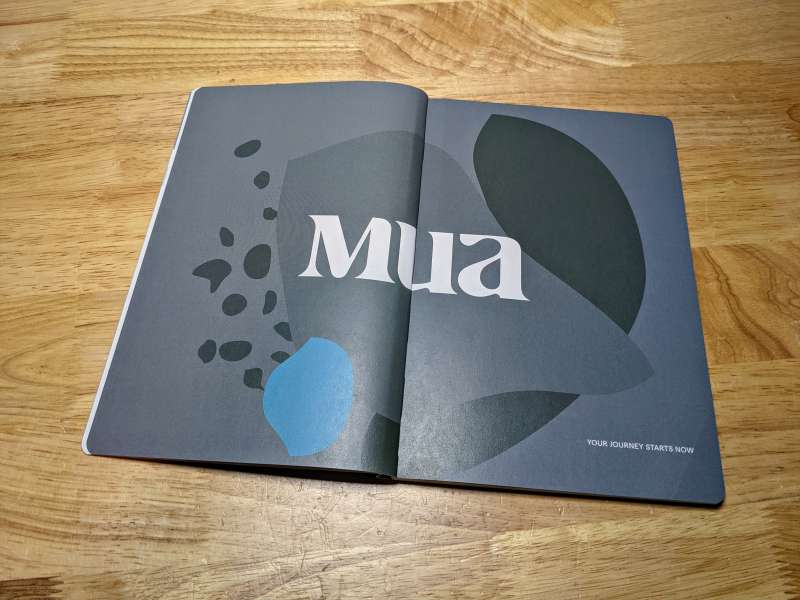
REVIEW – One of the unexpected but truly beneficial results of the pandemic has been the new focus some companies have placed on the mental well-being of their employees. My employer for instance goes to great lengths to provide us with tons of resources for bettering and maintaining our psychological well-being. Personally, I’ve found that journaling really helps me cultivate a sense of mindfulness and I’ve done so since I was old enough to put pen to paper.
Once I discovered Bullet Journaling, I was able to apply a lot of that mindfulness to my work life as well. I encourage everybody to learn about Bullet Journaling on their own but if I had to describe it in its simplest form it’s a system that utilizes symbols to help organize information. Recently, I had the chance to try out a similar journaling system that relies on symbols but is specifically designed to help working people deal with mental challenges, the MUA journal.
The MUA journal system focuses on helping you improve productivity and relationships in your work-life as well as reducing stress and breaking negative routines. I used the MUA journal for its full 28-day cycle, and while I struggled to justify the $31.90 price tag, I did find the system to be unique, insightful, and quite effective.
What is it?
The MUA journal itself is a 120-paged softcover notebook with guided exercises and blank sections for note-taking or journaling. The system of MUA which stands for “Me, Us, All” is in the company’s own words “a guided process, designed for working people, to release stress and reduce unhealthy habits.” The process is based on three symbols; a heart for positive emotions, a flame for negative emotions, and a line for neutral emotions.
The basic gist is that you list your daily activities and to-do items and attribute one of the three symbols to each. An example would be listing a morning work meeting and then circling the heart symbol to indicate that it generated positive emotions for you (if morning meetings are your thing that is).
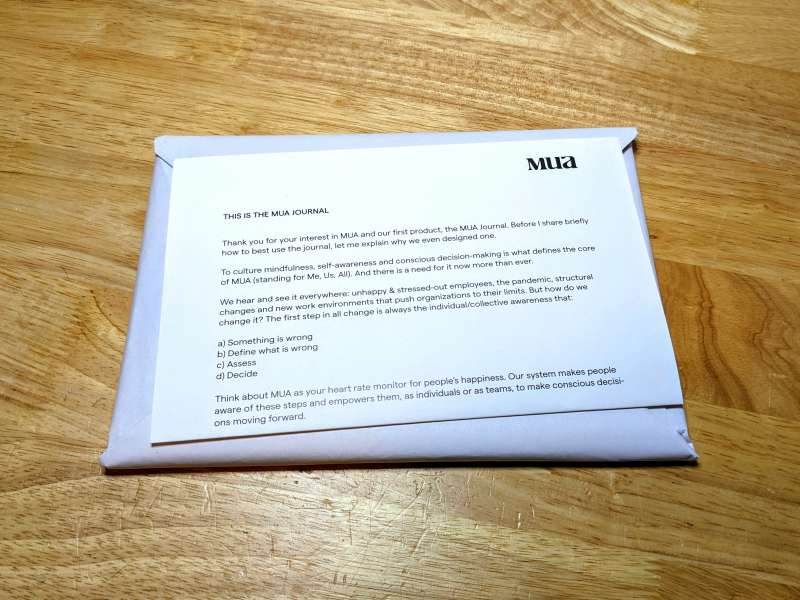
The MUA journal ships to you in a simple recycled paper envelope noted as being made from 95% “post-consumer” waste. Isn’t all waste “post-consumer” though?
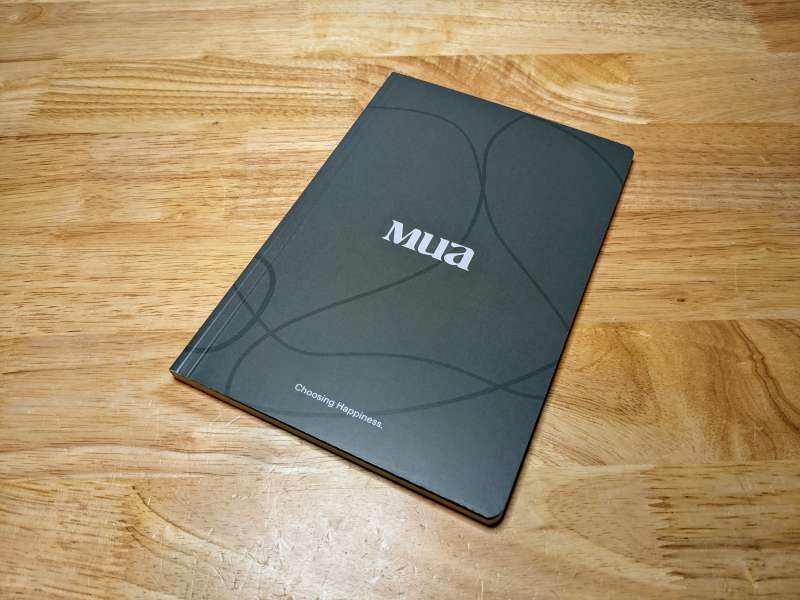
What’s in the box?
- MUA Journal
Hardware specs
- Number of pages: 120
- Page size: 9 x 6 in. with rounded corners
- Page paper weight: 100 g/m2
- Cover paper weight: 240 g/m2
- Paper composition: Chlorine-free
- Ink composition: Vegetable-based
- Country of manufacture: Germany
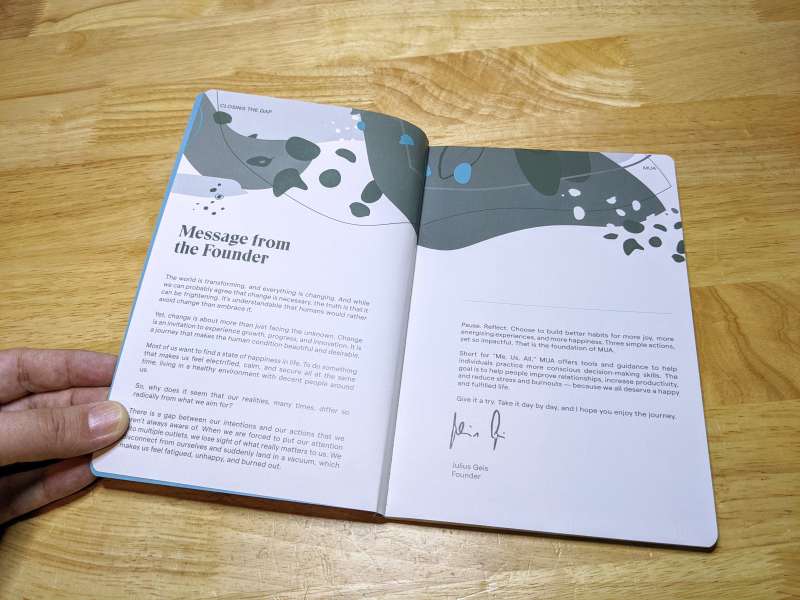
Design and features
The physical design of a journal is as important to me as the structure of the organizational system used within that journal. The MUA journal, while not as sturdy as my beloved Leuchtturm1917 notebook, is very well made.
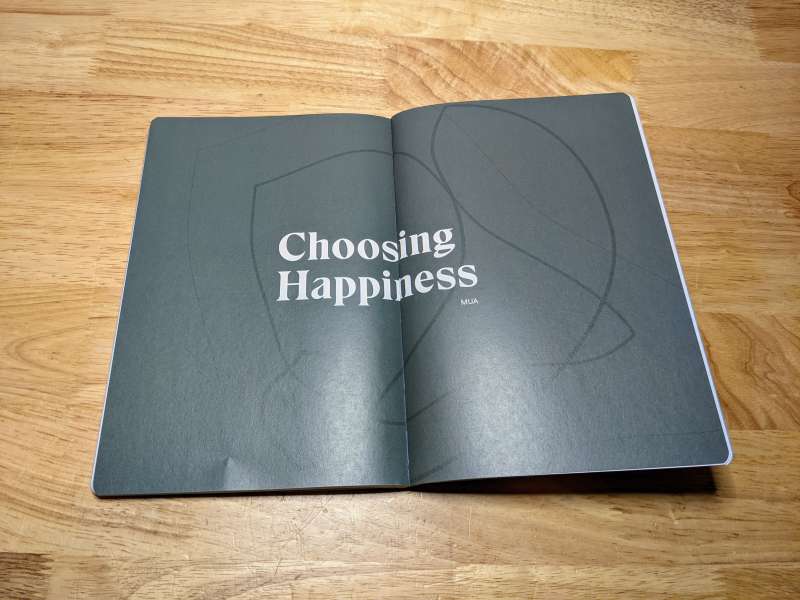
The company goes to great lengths to inform the user that all MUA journals, as well as their shipping materials, are sourced from 100% recycled “post-consumer” waste. If that’s important to you then it might help soften the blow of the $31.90 cost for the journal.
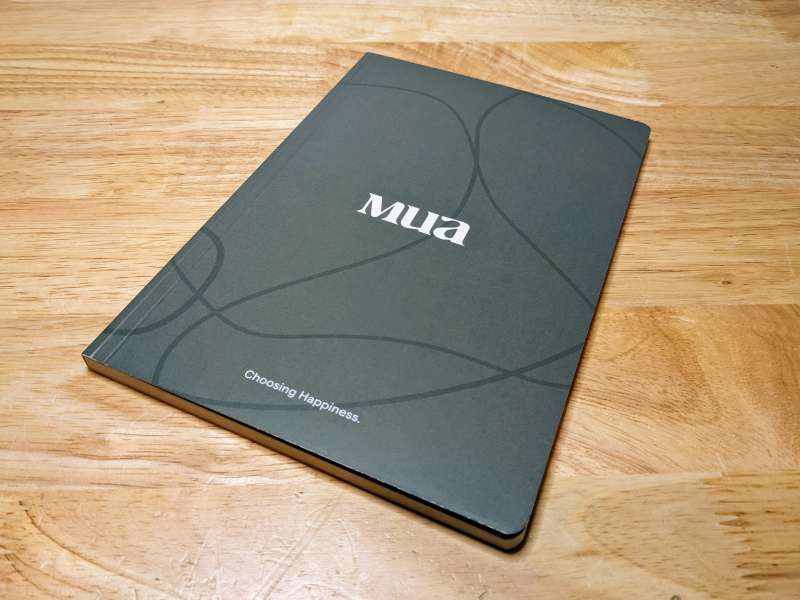
The front and back covers are heavy enough to survive being tossed in a backpack, thrown around an office, or rolled up into a pocket. The heavyweight of the paper resists ink seeping through from my favorite RIIND Compact pen which I reviewed back in November 2021.
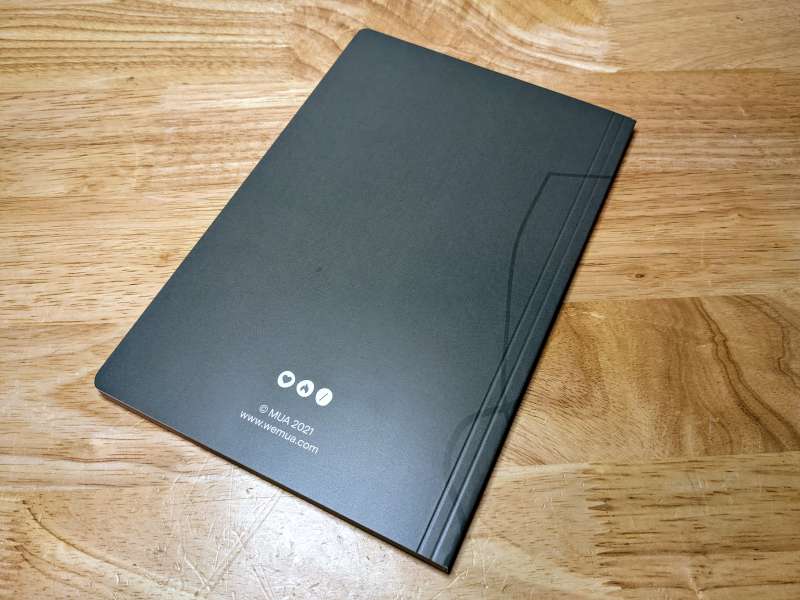
Along with being made of recycled materials, the MUA journal itself is easy to recycle once you’re done with it as it has no spiral bindings, lamination, foreign cover materials, or extra plastics.
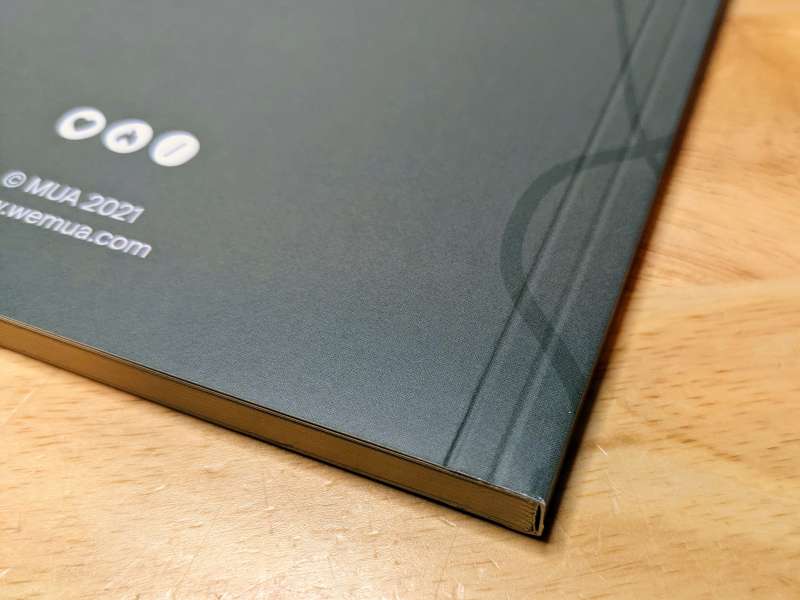
Even without those extras, the design of the MUA journal is very functional and intuitive.
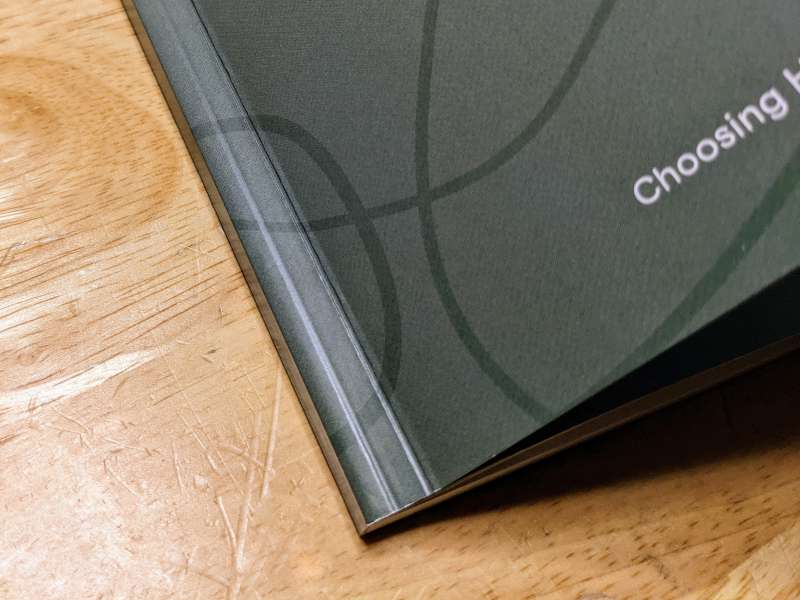
I especially like the pre-scored grooves along the edges that prevent the covers from tearing and the pages from separating from the spine.
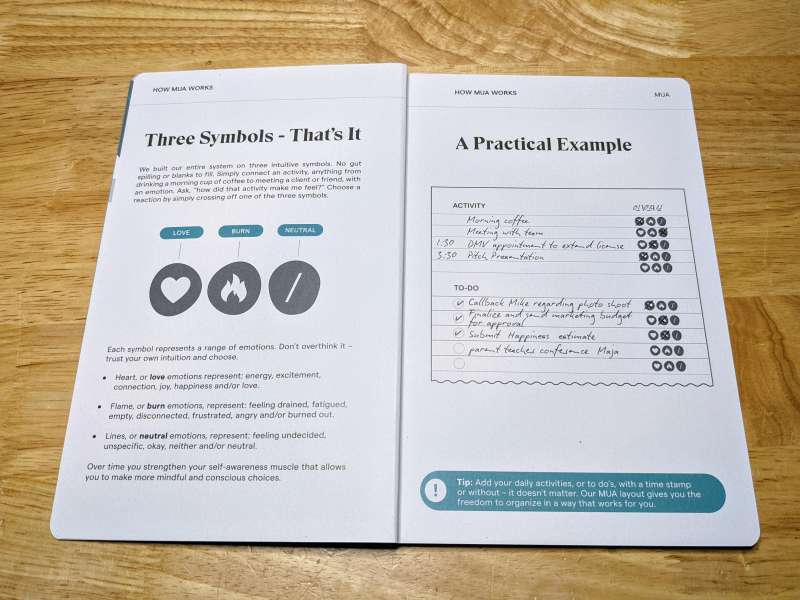
Performance
Without giving away too much of MUA’s patented system, the MUA journal is best used over 28 days as there are only four sets of 7-day recaps and exercises. It’s important to use the journal every day and to make sure to attribute an emotion to each event without overthinking it.
For me, it took a few days before I felt comfortable choosing which interactions to document since you only have fifteen lines for activities a day and ten for to-dos. If I recorded every meeting, conversation, and task each day I’d quickly run out of space.
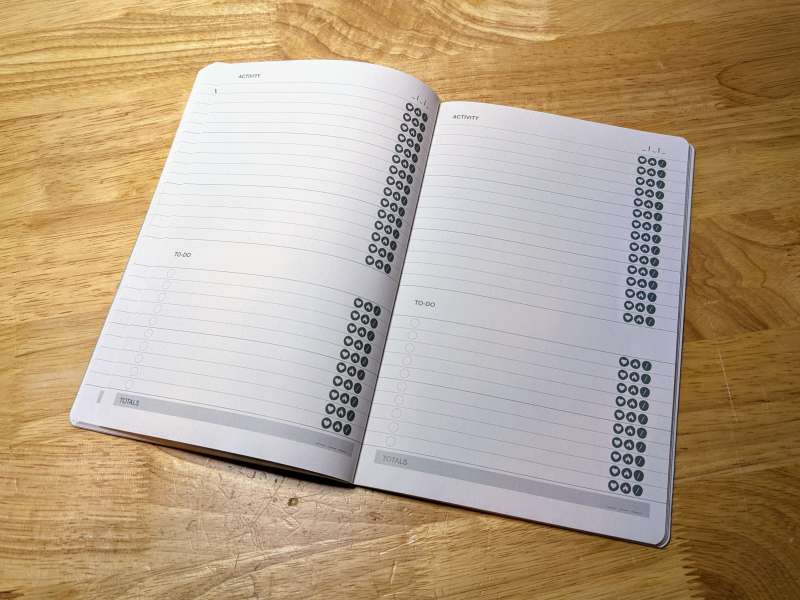
The blank notes sections between the days weren’t of much use to me because I record all of my daily notes in my Bullet Journal, also I prefer lined pages to dotted ones. That’s not to say these sections wouldn’t be useful to someone who used the MUA journal exclusively though.
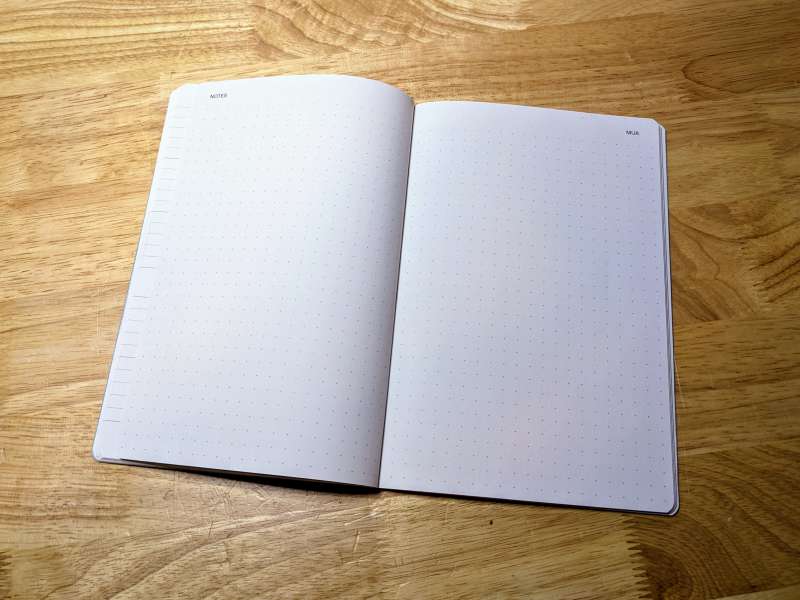
At the end of each 7-day section, you add up your heart, flame, and line emotions and take some time to document and reflect on the most significant occurrences. At first, adding up everything was a bit of a pain, especially at the end of a long week, but since the questions at the end of each week are the same after two weeks it got easier.
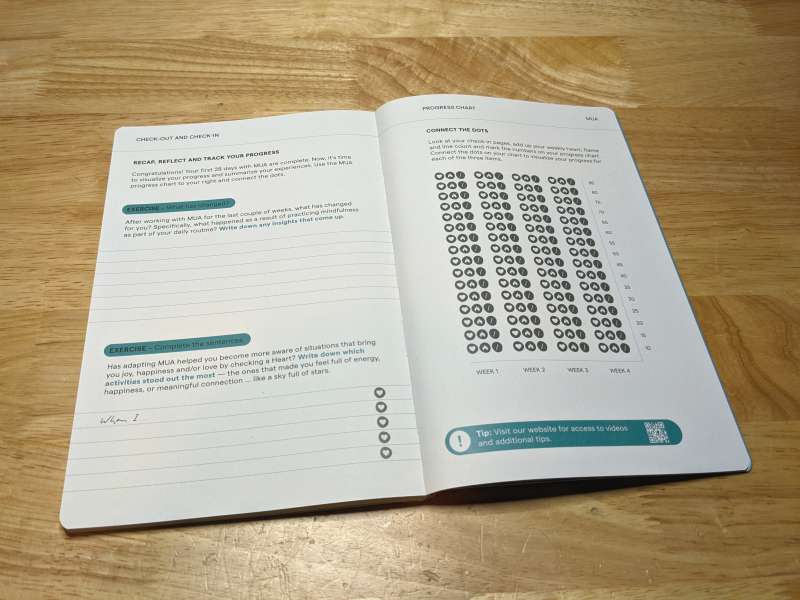
At the end of 28 days, you add up all of your results and attempt to chart your progress since the beginning of the experience. By week four though, I pretty much knew what my overall results would be. This was because after I found a good balance of what to record, acknowledging the emotions I attached to certain events helped me make more conscious decisions throughout the day. I could predict which of my daily habits would cause me to have negative emotions so I found myself building my day around the activities I knew would make me happier.
While the MUA system helped me be a bit more mindful each day, I had hoped for more guidance at the end of the program aside from simply adding up all of the hearts, flames, and lines. Because of this, I think the MUA journal might be best for someone just starting to explore mindfulness or journaling as long as they are ok with the high price.
What I like
- Great quality journal
- System applies to both work and/or personal life
- Focus on the use of recycled materials
What needs to be improved
- Notes sections are not useful if already using a journaling method
- Not much guidance outside of encouraging mindfulness
- Adding up totals is a bit laborious at times
Final thoughts
Using the MUA journal for 28 days definitely made me more mindful of my mood, my energy, and the things that affected them significantly. The system is simple enough to immediately understand and incorporate into your daily work or personal life, especially if you have any prior journaling experience. As a first step towards cultivating mindfulness in your life, I think the MUA journal would be very beneficial. However, the MUA system doesn’t offer much guidance in enacting changes in your life outside of identifying triggers for positive and negative emotions. The high price of $31.90 is most likely the result of the company’s strong commitment to using sustainable materials and reducing its carbon footprint but it’s still a bit high for something you could do on your own with a $1 notebook. Although I do think that spending that much money on the journal would act as a forcing factor for some people to actually follow through. Ultimately though, I would look at purchasing the MUA journal as a good investment in improving your mental wellbeing.
Price: $31.90
Where to buy: MUA
Source: The sample of this product was provided by MUA.

Gadgeteer Comment Policy - Please read before commenting
Hi Joe,
Thank you for your review of the MUA Journal. I’d like to add clarification regarding your thought-question, “isn’t all waste post-consumer?” – it is not. There are two main waste streams: industrial and consumer.
Many times you read about “recycled material” in products, but they are not specifying their waste stream source. Most recycled papers are coming from post-industrial waste streams. For example, “leftovers” from cutting large paper sheets to their desired size. These large paper sheets are made from “virgin sources” (from trees) not recycled sources. In this case, the paper had not completed a previous lifecycle yet.
Post-consumer waste is different. Post-consumer waste is a type of waste that’s produced by the end consumer of a material stream. No virgin paper source was included, and the papers pulp comes from previously used materials (office papers, household papers etc.).
PCW is crucial to support the demand for a recycled paper market, so waste facilities are not stopping recycling processes for our communities. Recycling many times is more expensive than producing paper from virgin material (fresh trees) – however, that isn’t sustainable nor logical.
Thank you again for giving MUA a try!
Aloha Julius (Founder, MUA)